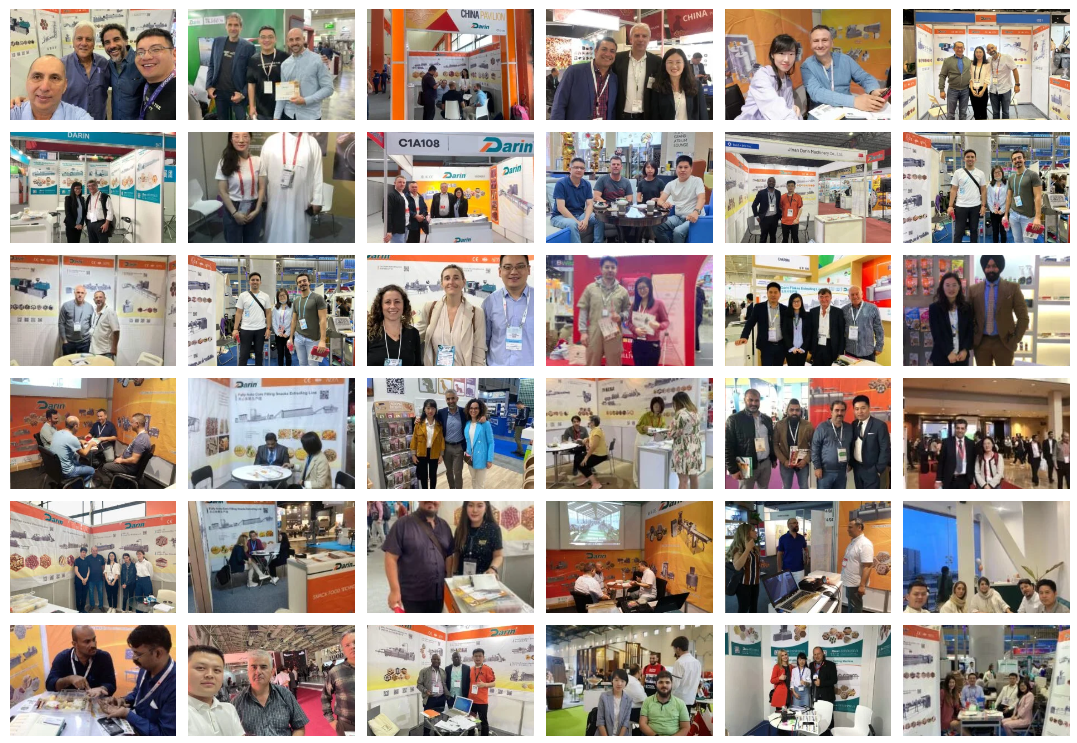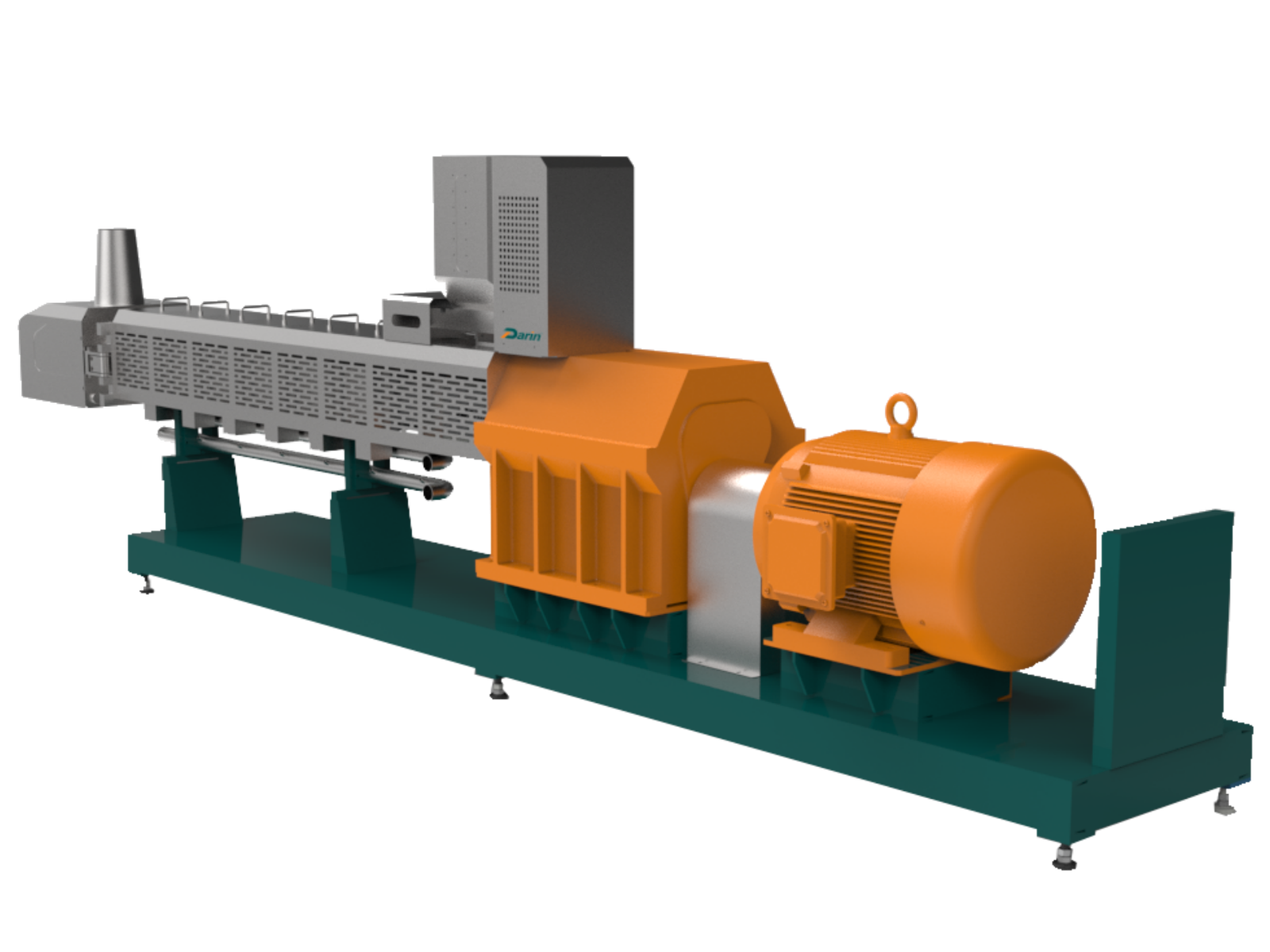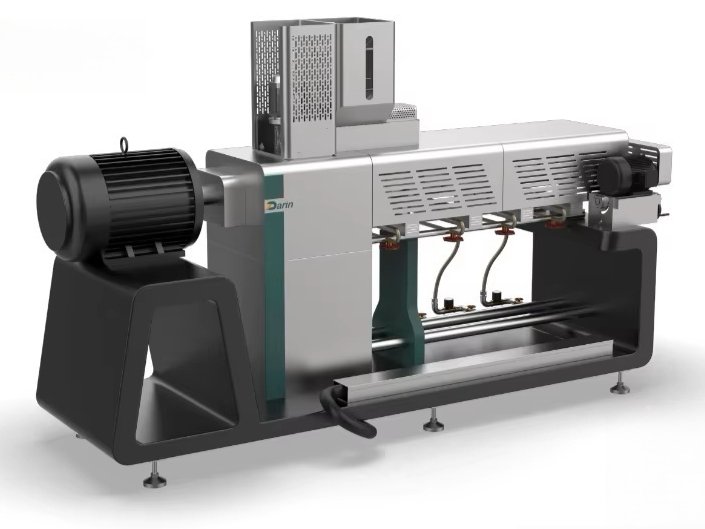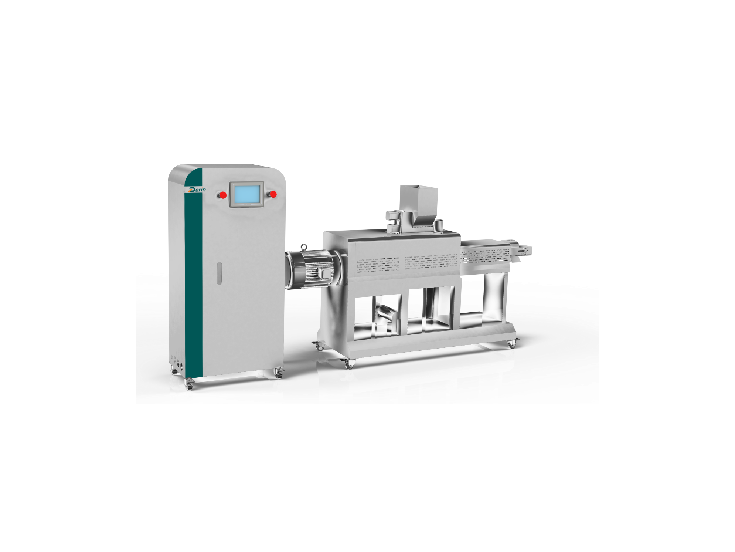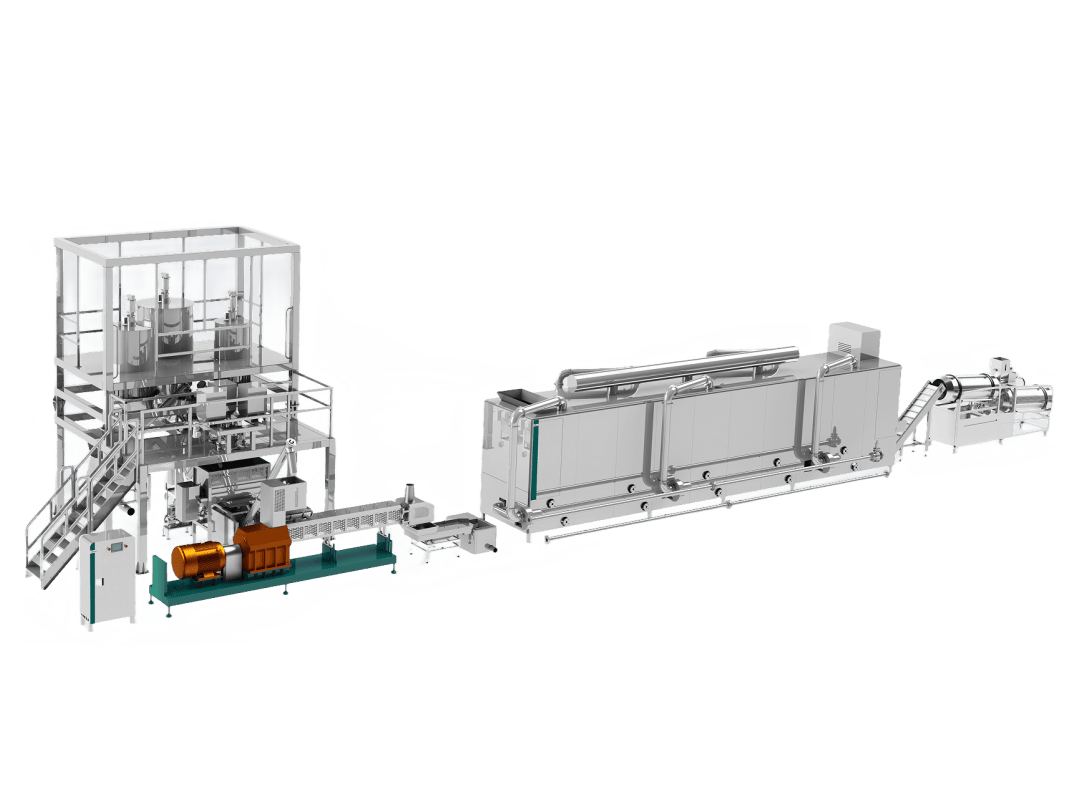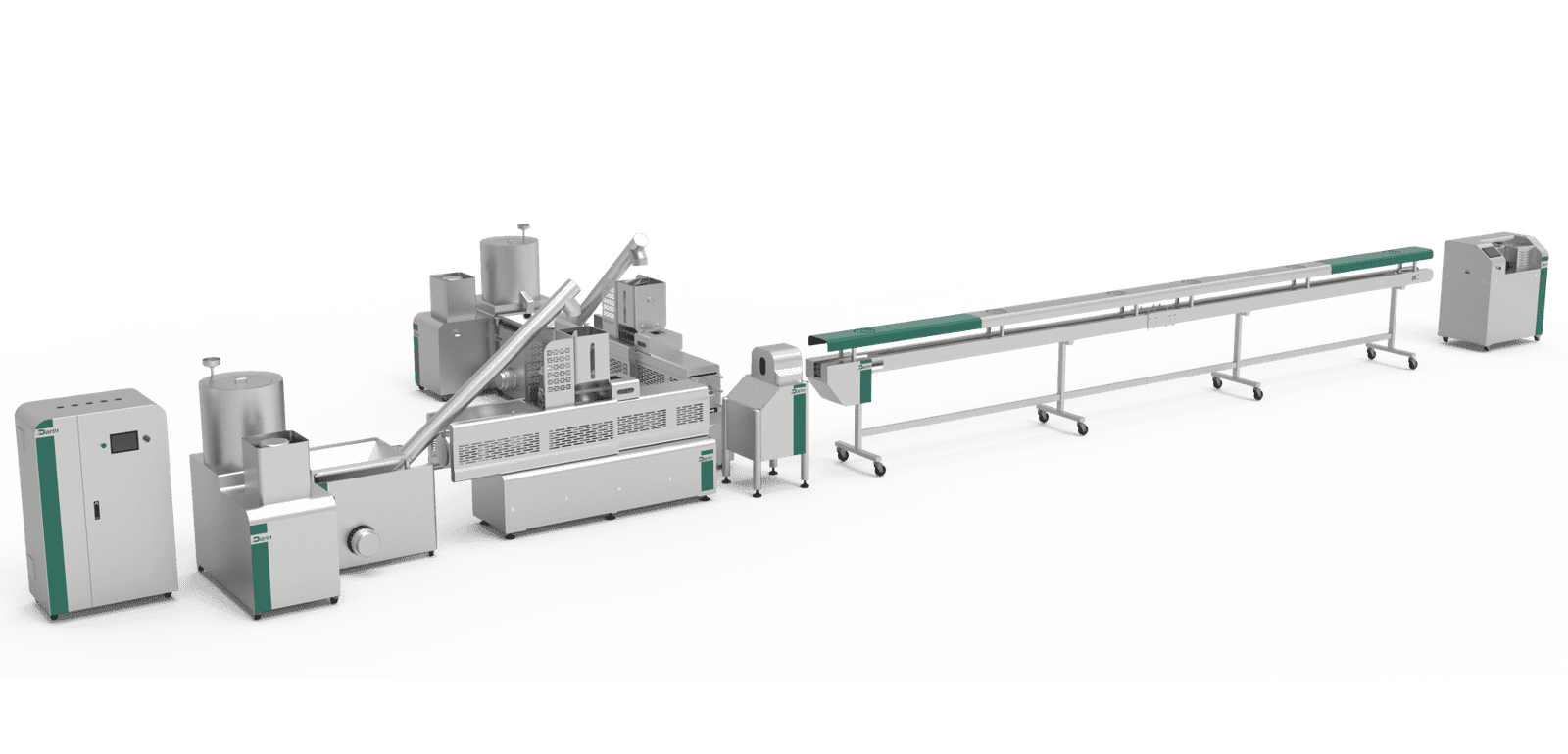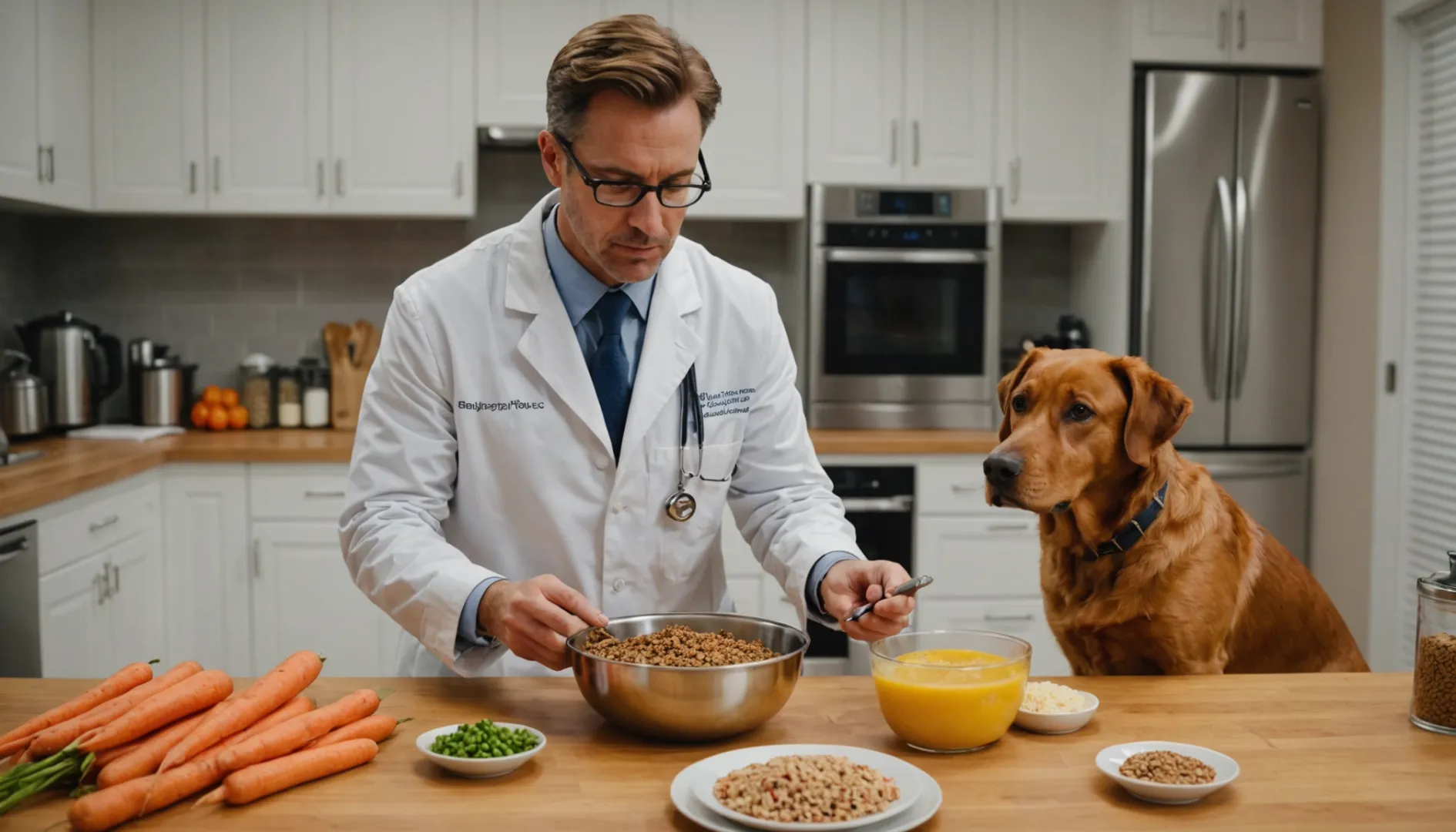
Step 1. Understanding the Foundations of Pet Food Formulation
1.1. The Purpose of Formulation
Pet food formulation is the scientific process of designing balanced, palatable, and nutritionally adequate diets for various species. It involves precise selection, proportioning, and processing of raw materials to meet the physiological, behavioral, and metabolic needs of pets.
Whether the goal is growth, maintenance, reproduction, or performance, the formulation determines the success of the final feed product.
For example:
- Dog foods emphasize digestible proteins, controlled fat, and fiber for energy balance.
- Cat foods focus on taurine, arachidonic acid, and high protein levels due to cats’ strict carnivorous nature.
- Fish feeds prioritize floating or sinking density, digestible amino acids, and stable pellets.
- Bird feeds balance grains, seeds, and essential vitamins for feather health and reproduction.
- Small mammals (rabbits, guinea pigs) require high-fiber formulations for digestive stability.
In essence, formulation is the scientific art of meeting nutrient requirements through available raw materials while maintaining palatability, texture, and safety.
1.2. Nutritional Requirements by Species
Each species — and even breed or growth stage — has unique nutrient demands:
| Species | Key Nutritional Priorities | Notes |
|---|---|---|
| Dogs | Protein (20–30%), fat (8–20%), fiber (2–6%), essential amino acids | Omnivorous; tolerate cereals and plant-based protein |
| Cats | High protein (30–45%), taurine, vitamin A, arachidonic acid | Obligate carnivores; must derive nutrients from animal sources |
| Fish | Balanced protein:energy ratio, micronutrients, and stability in water | Floating/sinking feeds affect digestion and oxygen consumption |
| Birds | Energy-dense grains, calcium, and vitamins A, D3, E | Varies between pet birds and production birds |
| Rabbits & Rodents | Crude fiber (15–25%), low fat, balanced minerals | Fiber maintains gut motility and dental health |
Formulation starts from nutritional standards, like:
- AAFCO (Association of American Feed Control Officials)
- NRC (National Research Council)
- FEDIAF (European Pet Food Industry Federation)
These standards act as blueprints, ensuring compliance and consistency across production.
1.3. Balancing Nutrition and Economics
Pet food formulation is not just about biology — it’s also economics and logistics. A nutritionist’s challenge is to meet requirements at the lowest possible cost while keeping ingredient availability, processing performance, and palatability in mind.
This balance depends on:
- Raw material cost volatility (e.g., fish meal vs. soybean meal)
- Nutrient density vs. bulk
- Functional ingredients (palatants, stabilizers, antioxidants)
- Consumer preferences (grain-free, organic, hypoallergenic)
A successful formula is therefore both nutritionally optimized and economically feasible, achieved through least-cost formulation models (linear programming) and iterative trials.
1.4. The Role of Feed Formulators
Professional formulators work as part of a multidisciplinary team — including nutritionists, veterinarians, process engineers, and extrusion technicians. They use formulation software (such as Format International, WUFFDA, or Brill Formulation) to balance nutrients according to ingredient data tables, digestibility coefficients, and production constraints.
Key responsibilities include:
- Determining target nutrient profiles
- Evaluating ingredient quality and availability
- Predicting extrusion behavior and stability
- Ensuring regulatory compliance
- Optimizing for taste, texture, and cost
In modern factories, formulation data are directly linked to automation systems and extrusion line controls, ensuring precision from batch to batch.
Step 2. Key Nutrients and Their Functional Roles
2.1. Macronutrients
Proteins — The foundation of tissue growth and maintenance.
- Sources: Meat meals, fish meal, soybean meal, wheat gluten, insect meal.
- Key amino acids: Lysine, methionine, cysteine, tryptophan, taurine (cats).
- Function: Structural (muscle, enzymes, hormones), immune response.
- Processing note: Overheating during extrusion can reduce digestibility.
Lipids (Fats & Oils) — The main energy reservoir and source of essential fatty acids.
- Sources: Poultry fat, fish oil, flaxseed oil, palm oil.
- Function: Energy, flavor enhancement, fat-soluble vitamin absorption.
- Critical aspects: Prevent oxidation with antioxidants (BHT, tocopherols).
- Fish feeds require precise omega-3 and omega-6 ratios to prevent fatty liver.
Carbohydrates — Supply energy and contribute to kibble expansion and binding.
- Sources: Corn, rice, wheat, cassava, sweet potato.
- Function: Energy substrate, starch gelatinization during extrusion for texture.
- Cats have limited carbohydrate utilization — careful control is essential.
Fiber — Regulates digestion and stool quality.
- Sources: Beet pulp, cellulose, rice bran.
- Function: Satiety, gut microbiota regulation.
- Dogs & cats: 2–6% typical inclusion; rabbits: up to 20–25%.
2.2. Micronutrients
Vitamins — Organic compounds required in small amounts.
- Fat-soluble: A, D, E, K — for vision, bone health, and antioxidant protection.
- Water-soluble: B-complex, C — for metabolism and stress resistance.
- Stability: Sensitive to heat and light; often added post-extrusion via coating systems.
Minerals — Structural and functional roles.
- Macrominerals: Calcium, phosphorus, potassium, sodium, magnesium.
- Microminerals: Iron, zinc, copper, selenium, iodine.
- Balancing tip: Ca:P ratio around 1.2:1 for most species.
Additives and Functional Ingredients
- Probiotics/prebiotics for gut health.
- Enzymes (protease, amylase) to enhance digestibility.
- Palatants to improve flavor.
- Preservatives (sorbates, citric acid) for shelf stability.
- Colorants and flavorings for product differentiation.
2.3. Species-Specific Nutritional Highlights
- Dogs: Require linoleic acid, but can synthesize arachidonic acid.
- Cats: Must obtain taurine and preformed vitamin A from animal tissues.
- Fish: Require specific amino acids; overfeeding protein wastes nitrogen.
- Birds: Require choline, niacin, and antioxidants to prevent feather degradation.
- Rodents: Vitamin C essential for guinea pigs; lack of it leads to scurvy.
In short, formulation precision is about more than mixing ingredients — it’s meeting biological truths through engineered design.
Step 3. Ingredient Selection, Sourcing, and Quality Evaluation
3.1. Ingredient Classification
Pet food ingredients fall into several major categories:
| Category | Examples | Function |
|---|---|---|
| Animal protein meals | Chicken meal, fish meal, meat & bone meal | Primary amino acid source |
| Plant proteins | Soybean meal, pea protein, corn gluten meal | Cost-effective protein substitute |
| Carbohydrate sources | Rice, corn, wheat, cassava, barley | Energy and binding |
| Fiber sources | Beet pulp, alfalfa meal, cellulose | Digestive regulation |
| Fats & oils | Poultry fat, fish oil, canola oil | Energy and palatability |
| Premixes | Vitamin/mineral blends | Nutrient balancing |
| Additives | Antioxidants, flavor enhancers, enzymes | Stability and sensory appeal |
3.2. Ingredient Sourcing
Reliable sourcing is a critical pillar of formulation success.
Manufacturers should evaluate:
- Origin and traceability (country, plant, supplier)
- Nutrient variability (e.g., seasonal soybean quality changes)
- Contaminants (mycotoxins, heavy metals, pathogens)
- Storage stability (temperature, moisture control)
- Supplier certification (ISO, GMP+, HACCP)
For high-end brands, ingredient transparency has become a marketing value — “human-grade,” “locally sourced,” or “sustainable” ingredients increase brand trust and consumer loyalty.
3.3. Ingredient Quality Evaluation
Before ingredients enter production, they undergo quality testing:
- Moisture content (dry matter basis normalization)
- Protein, fat, ash analysis (Kjeldahl or NIR spectroscopy)
- Amino acid and fatty acid profiles
- Digestibility assays (in vitro enzyme tests)
- Microbial safety (Salmonella, E. coli, mold counts)
- Mycotoxin screening
Modern factories integrate these analyses into real-time data systems. Results inform both formulation adjustment and extrusion parameter tuning, maintaining consistent product quality.
3.4. Novel and Functional Ingredients
The next frontier of pet food formulation includes novel proteins and functional ingredients:
- Insect meal (black soldier fly larvae, mealworm) — sustainable, rich in protein and lauric acid.
- Algal oils — omega-3 source alternative to fish oil.
- Plant extracts (rosemary, green tea) — natural antioxidants.
- Yeast derivatives — immune support and flavor enhancement.
- Collagen & gelatin — joint health and texture improvement.
These innovations align with global trends toward eco-friendly, hypoallergenic, and specialized diets (e.g., senior, digestive care, weight control).
Excellent — we’ll now continue with Part 2 (Steps 4–6) of the 9000+ word guide on “Pet Food Formulation”, going deeper into formulation modeling, nutrient balancing, process integration, and manufacturing optimization, leading naturally toward Darin Machinery’s extrusion solutions.
Step 4. Designing and Modeling Pet Food Formulations
4.1. The Mathematical Foundation
Formulation design is both an art and a quantitative science.
At its core lies least-cost linear programming (LCLP) — a mathematical optimization model that determines the most cost-effective ingredient combination meeting all nutritional and technical constraints.
The general equation is:
Minimize: Σ (Ci × Xi)
subject to
Σ (aij × Xi) ≥/≤ bj, where
- Ci = cost of ingredient i
- Xi = proportion of ingredient i
- aij = nutrient contribution of ingredient i to nutrient j
- bj = required minimum or maximum of nutrient j
This system allows nutritionists to model thousands of possible ingredient combinations automatically, balancing nutritional adequacy, cost, availability, and processing compatibility.
4.2. Practical Formulation Workflow
A professional feed formulator typically follows this workflow:
Define Target Nutrient Profile
Based on AAFCO or NRC standards, choose a nutrient specification depending on species, age, size, and physiological condition.Example:
- Puppy food: 28% protein, 17% fat, 5% fiber
- Adult cat food: 35% protein, 15% fat, 3% fiber
- Tilapia feed: 32% protein, 6% fat, <1% fiber
Select Ingredient Candidates
Prepare a list of available ingredients, including their nutrient composition, cost, and constraints (e.g., max inclusion % due to anti-nutrients or palatability limits).Run Formulation Software
Tools such as Brill Formulation, Format Solutions, or WUFFDA use built-in nutrient databases to perform least-cost optimization.Evaluate the Formula Output
Review nutrient coverage, cost efficiency, processing compatibility (e.g., starch gelatinization potential), and sensory aspects (color, odor, density).Pilot Production Testing
Small-batch extrusion trials validate the formula’s behavior — checking expansion, moisture retention, and palatability.Adjust and Finalize
Fine-tune based on quality control feedback, sensory evaluation, and feeding trials.
4.3. Constraints in Formulation
Real-world formulation always involves constraints:
- Ingredient availability: Seasonal supply fluctuations.
- Nutrient antagonism: Ca–Zn or Fe–Cu interactions.
- Processability: High-fat formulas may reduce extrusion expansion.
- Palatability: Excess fiber or plant proteins may lower acceptance.
- Legal limits: Vitamin/mineral inclusion ceilings (per AAFCO, EU directives).
A balanced formula harmonizes nutrient science, sensory performance, and process behavior — not just theoretical nutrient fulfillment.
4.4. Data Integration and Automation
Modern feed mills connect formulation software directly with:
- ERP systems (for cost and procurement data)
- LIMS systems (for lab nutrient validation)
- Extruder PLCs (for automatic batch correction)
- SCADA platforms (for real-time quality tracking)
This creates a “digital formulation ecosystem”, where every batch is traceable and continuously optimized for both nutrition and efficiency — a hallmark of modern pet food manufacturing.
Step 5. Nutrient Balancing and Optimization Techniques
5.1. Protein and Amino Acid Balance
Even within the same crude protein percentage, amino acid balance determines biological value.
Key principles:
- Ensure the first-limiting amino acid (e.g., lysine in cereal-based diets) is adequate.
- Use ideal protein ratio models to reduce excess nitrogen excretion.
- Supplement synthetic amino acids (e.g., DL-methionine, L-lysine HCl) to correct deficits.
- Consider digestibility coefficients: animal proteins are generally more digestible than plant sources.
5.2. Fat and Energy Optimization
Energy level affects feed intake, growth, and texture.
| Parameter | Typical Range | Key Notes |
|---|---|---|
| Dogs | 3,500–4,000 kcal/kg | Adjust fat for activity level |
| Cats | 4,000–4,500 kcal/kg | High fat improves palatability |
| Fish | 3,000–5,000 kcal/kg | Balance with protein:energy ratio |
| Birds | 2,800–3,500 kcal/kg | Excess energy may cause obesity |
Control omega-6:omega-3 ratio (around 5–10:1 for dogs, 2–5:1 for cats/fish).
Use natural antioxidants like rosemary extract or vitamin E to protect unsaturated fats from rancidity.
5.3. Carbohydrate and Starch Control
Although dogs and cats are not starch-dependent, controlled starch is essential for kibble structure. During extrusion:
- Gelatinized starch provides binding, expansion, and crisp texture.
- Raw starch can lower digestibility and cause stool issues.
Processing target:
At least 80–90% starch gelatinization for dry kibble.
For aquatic feeds, starch level affects water stability and floatability — a critical performance factor.
5.4. Vitamin & Mineral Matrix
Vitamins and minerals are typically added via premixes to ensure accuracy.
Manufacturers maintain a matrix adjustment factor to compensate for extrusion losses (especially for heat-sensitive vitamins A, D, E, B1, B6).
Post-extrusion liquid coating systems allow re-addition of delicate compounds, ensuring nutrient retention and uniform distribution.
5.5. Fiber and Functional Ingredients
Fiber influences gut transit, stool consistency, and microbiota.
Modern formulations use blended fiber systems combining soluble (FOS, inulin) and insoluble sources (cellulose, beet pulp).
Functional additives:
- Probiotics: Lactobacillus, Bacillus subtilis — gut health.
- Prebiotics: MOS, FOS — enhance beneficial flora.
- Yeast derivatives: Improve immunity and flavor.
- Glucosamine & chondroitin: Joint health for senior dogs.
- L-carnitine: Fat metabolism in weight-control diets.
5.6. Palatability Optimization
Palatability is a decisive commercial factor. Even the most balanced formula fails if pets refuse it.
Techniques:
- Use of digest hydrolysates (e.g., poultry liver digest).
- Maillard reaction enhancers during extrusion to generate attractive aroma.
- Fat coating post-extrusion for flavor and texture.
- Natural flavoring agents like yeast or cheese powder for cats and dogs.
Darin Machinery’s advanced vacuum coating systems enable uniform absorption of palatants and oils, ensuring consistent product taste and smell.
Step 6. Process Integration: From Formulation to Production
6.1. The Role of Extrusion
Extrusion is where formulation meets technology.
It transforms raw materials into cooked, sterilized, and shaped kibble, using heat, pressure, moisture, and shear.
The process affects:
- Nutrient digestibility
- Product density and texture
- Palatability and shelf life
A well-formulated recipe must match the extrusion parameters to achieve desired product quality.
6.2. Critical Process Parameters
| Parameter | Typical Range | Effect |
|---|---|---|
| Moisture | 20–30% pre-extrusion | Influences gelatinization and expansion |
| Temperature | 100–160°C | Determines starch gelatinization and sterilization |
| Pressure | 20–40 bar | Affects texture and density |
| Screw speed | 200–600 rpm | Controls shear, cooking, and throughput |
| Die design | Species-specific | Defines pellet shape and size |
6.3. Nutrient Retention in Extrusion
Key strategies to protect nutrients:
- Use of thermostable vitamin forms
- Lower moisture content for sensitive ingredients
- Post-coating with heat-sensitive additives
- Proper cooling and drying to prevent oxidation
Darin twin-screw extruders ensure precise thermal control and homogeneous mixing, minimizing nutrient loss while maximizing expansion and texture.
6.4. Product Customization by Species
- Dog & Cat Food: Expanded kibble, various shapes (bone, heart, fish).
- Fish Feed: Floating or sinking pellets via die and density control.
- Bird Feed: Compressed, non-expanded particles with high nutrient density.
- Small Mammal Feed: Uniform pellets with controlled fiber content.
By adjusting screw configuration, die geometry, and moisture injection, manufacturers can create a wide range of products from a single formulation base.
6.5. Integration with Coating & Drying Systems
After extrusion:
- Dryer — removes residual moisture to <10%.
- Cooler — stabilizes temperature before oil application.
- Vacuum Coater — applies palatants, fats, or vitamin solutions evenly.
- Sifter & Metal Detector — ensures particle uniformity and safety.
Darin Machinery’s modular system design allows seamless synchronization between extruder, dryer, and coating line — enabling efficient, hygienic, and fully traceable production.
Step 7. Quality Control and Analytical Validation
7.1. Why Quality Control Is Central
In pet food manufacturing, quality control (QC) is the backbone that ensures safety, consistency, and compliance.
Even the best formula fails if its execution varies batch to batch. QC bridges the gap between formulation design and real-world product performance.
QC is not only about testing the end product — it starts with raw materials, continues through processing, and ends with finished product evaluation.
7.2. Key Quality Control Parameters
Raw Materials
- Moisture content: Controls storage stability.
- Nutrient composition: Cross-checks with formulation data.
- Microbial contamination: Salmonella, mold, yeast.
- Mycotoxin screening: Especially for corn, wheat, and soybean-based materials.
- Bulk density and particle size: Influences mixing uniformity and extrusion behavior.
In-Process Control
- Extruder temperature and pressure profiles
- Moisture at the extruder exit (20–30%)
- Expansion ratio and texture
- Die pressure stability — signals uniform material feed
- Dryer outlet moisture (<10%)
Finished Product Tests
- Proximate analysis: Protein, fat, fiber, ash, moisture.
- Vitamin/mineral assay: Confirms nutrient fortification accuracy.
- Palatability tests: Preference ratio between control and new formula.
- Physical tests: Density, hardness, color, shape uniformity.
- Microbiological analysis: Ensures safety for shelf life and export.
7.3. Analytical Methods
Modern pet food labs employ advanced instruments:
- NIR Spectroscopy: Rapid multi-parameter analysis (protein, fat, moisture).
- HPLC: Vitamin quantification.
- ICP-OES: Mineral and trace element analysis.
- GC-FAME: Fatty acid profile evaluation.
- Water activity (Aw): Predicts microbial stability.
Real-time data can be integrated into Darin Machinery’s intelligent extrusion line monitoring system, allowing continuous nutrient consistency checks and automated process corrections.
7.4. Traceability and Documentation
To meet export and safety requirements, every ingredient and batch must be traceable.
Digital production logs include:
- Batch number and ingredient lot
- Operator ID and timestamp
- Extruder conditions (temp, pressure, speed)
- QC test results
- Packaging and shipment details
Such data form a traceability chain, critical for audits (ISO 22000, HACCP, FSSC 22000) and brand credibility.
Step 8. Feeding Trials and Product Validation
8.1. Purpose of Feeding Trials
Laboratory analysis shows nutrients on paper — but feeding trials prove biological performance.
Feeding trials evaluate digestibility, acceptance, stool quality, and health outcomes in real animals.
8.2. Types of Feeding Trials
Palatability Tests
- Two-bowl test: Offer the test and control diet simultaneously; measure consumption ratio.
- Single-bowl test: Observe voluntary intake over several days.
- Metrics: acceptance (% intake), first-choice preference, eating speed.
Digestibility Trials
- Controlled feeding with collection of feces or water effluent (for fish).
- Digestibility coefficients are calculated as:
(Nutrient intake – Nutrient excreted) / Nutrient intake × 100% - A good diet achieves >85% digestibility for proteins and fats.
Growth and Performance Trials
- Measure weight gain, feed conversion ratio (FCR), and health parameters.
- Essential for new formulas or special diets (e.g., hypoallergenic, senior, grain-free).
Long-Term Health Observation
- Monitors coat condition, skin health, dental wear, stool volume, and energy level.
- For aquafeeds: survival rate, growth uniformity, and feed efficiency (FCR < 1.2 desirable).
8.3. Data Interpretation
Data from feeding trials refine formulations and verify label claims.
For instance:
- A diet claiming “high digestibility” must demonstrate at least 85% nutrient absorption.
- “Improves coat shine” must correlate with increased linoleic acid and biotin intake.
Manufacturers often collaborate with universities, veterinary centers, or independent labs to obtain credible trial data — essential for product registration and export approval.
Step 9. Regulatory Compliance and Labeling Standards
9.1. Global Regulatory Frameworks
Pet food formulation must comply with strict international standards.
The most widely recognized frameworks include:
| Region | Standard | Key Aspects |
|---|---|---|
| USA | AAFCO | Nutrient profiles, labeling, guaranteed analysis |
| EU | FEDIAF, Regulation (EC) No 767/2009 | Feed hygiene, additives, claims |
| China | GB/T 13078, AQSIQ guidelines | Ingredient approval, safety |
| Japan | MAFF Pet Food Safety Act | Contaminant limits |
| Canada | CFIA, Feeds Regulations | Registration and labeling |
| Oceania | PFA Australia/NZ Code | Ingredient sourcing, claims |
9.2. Labeling Requirements
Typical pet food labels must include:
- Product name — species and life stage indicated.
- Guaranteed analysis — minimum protein, fat; maximum fiber, moisture.
- Ingredient list — descending by weight.
- Nutritional adequacy statement — per AAFCO or NRC.
- Feeding instructions — daily portions by weight.
- Manufacturer name and address — traceability and contact.
- Batch number and date code — production trace.
Mislabeling (e.g., claiming “complete diet” without validation) is a legal risk and damages brand credibility.
9.3. Certification and Export Readiness
To sell internationally, pet food manufacturers must meet certifications such as:
- ISO 9001 / 22000
- HACCP / GMP+
- BRCGS Food Safety
- FDA Registration (for US exports)
- Customs Union (Eurasia) TR CU 021/2011
For Darin Machinery’s clients, these standards influence equipment design: easy-clean structures, hygienic stainless-steel surfaces, automated control, and data logging features that simplify audit documentation.
Step 10. Future Trends and Innovations in Pet Food Formulation
10.1. Sustainability and Alternative Proteins
With the global pet population surpassing 1 billion, sustainability is reshaping formulation priorities.
New sources like insect protein, algal meal, single-cell proteins (SCPs), and mycoprotein offer high digestibility with low environmental footprint.
Circular economy initiatives also utilize food waste valorization — converting byproducts like poultry offal or spent grains into high-value pet ingredients through enzymatic hydrolysis and extrusion.
10.2. Personalized and Functional Nutrition
Future pet foods are moving toward personalized diets based on:
- Age, breed, health condition, and genetic data.
- Microbiome analysis — tailoring fiber and probiotic content.
- Targeted supplements (e.g., anti-inflammatory omega-3s, joint health peptides).
These advances demand precise formulation control and flexible extrusion technology, where Darin’s PLC-driven extruders and modular design excel.
10.3. Digitalization and AI in Formulation
AI-driven formulation software is revolutionizing the industry:
- Predicts ingredient interactions and digestibility.
- Simulates extrusion responses.
- Optimizes cost, nutrition, and palatability in real time.
- Integrates with smart manufacturing systems for automated batching and traceability.
Darin Machinery’s next-generation extrusion lines are compatible with digital twin models, allowing data-driven optimization from formulation to final product.
10.4. Clean Labels and Transparency
Consumers increasingly demand “no artificial additives,” “grain-free,” and “human-grade” claims.
This trend requires clean ingredient sourcing, natural preservation, and transparent communication of formulation science.
Trust and transparency will define the next era of pet nutrition — and only manufacturers with consistent formulation control and hygienic production systems can deliver it.
From Formula to Factory – Making Science Work for Pets
Behind every successful pet food brand lies one truth: formulation and processing are inseparable.
A scientifically perfect recipe only becomes valuable when it’s produced safely, efficiently, and consistently — every single day.
This is where technology meets nutrition.
Modern twin-screw extrusion, precise drying, and vacuum coating systems translate formulation design into real-world nutrition — kibble after kibble, pellet after pellet.
If you’re planning to develop or upgrade a pet food production line, Darin Machinery offers:
- Turnkey extrusion systems for dry, semi-moist, aquatic, and specialty feeds.
- Customized formulation support based on species, market, and product goals.
- Automated control systems ensuring nutrient consistency and traceability.
- Factory design, training, and recipe development tailored to your brand vision.
Let’s Build the Future of Pet Nutrition Together
Whether you’re a new entrant or an established manufacturer, precision formulation and reliable processing are the foundation of your success.
Contact Darin Machinery today to explore how our extrusion and coating technologies can help you create high-quality, market-winning pet food formulations that pets love and owners trust.
